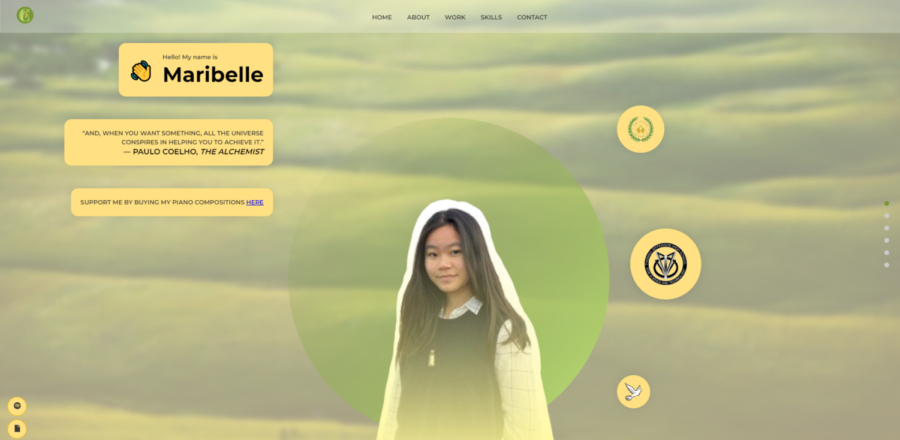Personal websites: a personal journey
Students combine their passions for programming, design and networking through personal websites.
Creating a personal website improves professional skills, such as programming and design. However, it can also be a reflective experience, since it requires considering what information is the most important to display. “It’s fun to make a personal website, and you get to learn more about yourself. I learned more about my resume and skills, because I wanted to put that information on my website,” junior Jesse Choe said.
September 17, 2022
Forget about Facebook, Instagram, Twitter, or Snapchat. For Jefferson students, a new way of building an online presence is on the rise — personal websites.
Although making a personal website from scratch can seem daunting, junior Maribelle Chu emphasizes that anyone can learn how to do it.
“You don’t have to take a web development class in order to create a website. You can just search up how to make a personal portfolio website on the internet, and there will be tons of resources,” Chu said.
However, even when following a tutorial, personal websites are still entirely customizable and offer a lot of room for creativity.
“For me, building a personal website is about combining my artistic side with my technical side,” Chu said. “It’s a really unique combination, especially since we go to a STEM school and want to incorporate the arts as well.”
Senior Alvan Arulandu also places a strong focus on the design of his personal website, since it’s the first feature that viewers notice.
“A lot of the time, people don’t actually care about the functionality or information,” Arulandu said. “It’s more like, ‘oh, that looks pretty,’ and then they just scroll through and maybe click one button.”
Because design is such an integral part of a personal website, Arulandu encourages students interested in making their own website to create their design first before doing any actual coding.
“My biggest piece of advice is to plan your design out first. That’s a mistake I made when I was creating the first couple of versions of my website. But after, I realized that it’s a really good idea to go on design inspiration sites to figure out what I like,” Arulandu said.
Along with having an attractive design, another important aspect of a personal website is to connect information available in different locations on the internet. This allows individuals to control and further establish their online presence.
“A lot of the time, especially with high school students, if you search up your name on Google, you’ll get a bunch of random results. But if you have a personal website and link all of your profiles to it, everything is in a single place,” Arulandu said.
This centralization makes personal websites convenient for students that use numerous online networking and portfolio platforms.
“Instead of having to send all these different links when someone asks for my YouTube channel or Github or LinkedIn, I can just send them my website, and then it’s really easy for them to find the information,” Arulandu said.
For students looking to apply for internships, a personal website can also function as an extended resume. Along with demonstrating strong programming and design skills, personal websites allow students to showcase their projects.
“If you have a personal website, it shows that you’re more professional, and you can display all your work and information better,” junior Jesse Choe said.
Because a personal website involves many steps, such as brainstorming the website’s content and fixing programming errors, it can be a lengthy process.
“It took me about a month to finish my website. I had trouble debugging my code for a while, since the backend and frontend both had trouble, but in the end, I managed to fix everything.” Choe said.
Although tedious and time-consuming, the process of creating a personal website can be incredibly fulfilling.
“You learn a lot from making a website. Not only do you learn the coding aspect, but you also learn determination, because you run into errors and have to figure them out,” Chu said.






